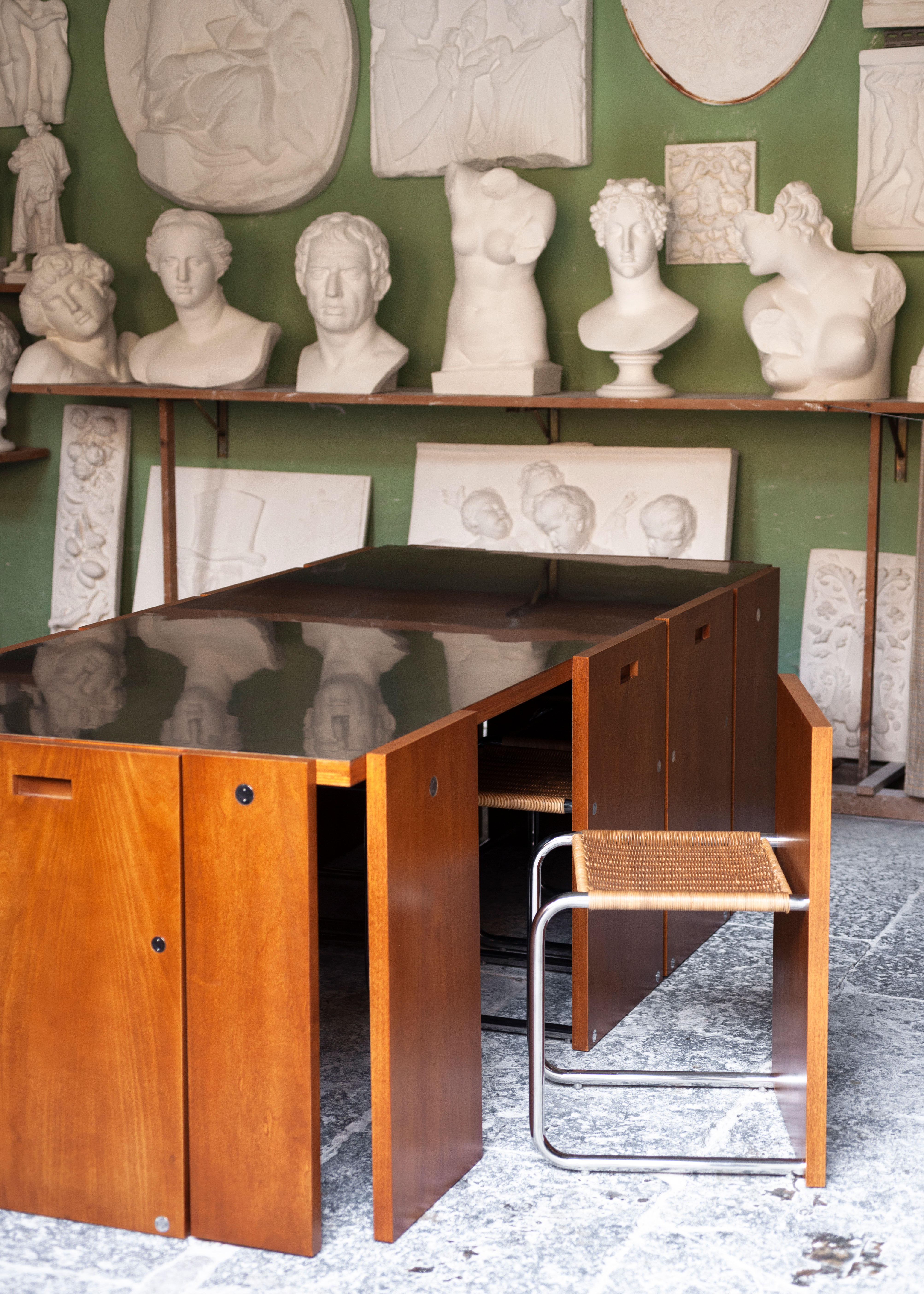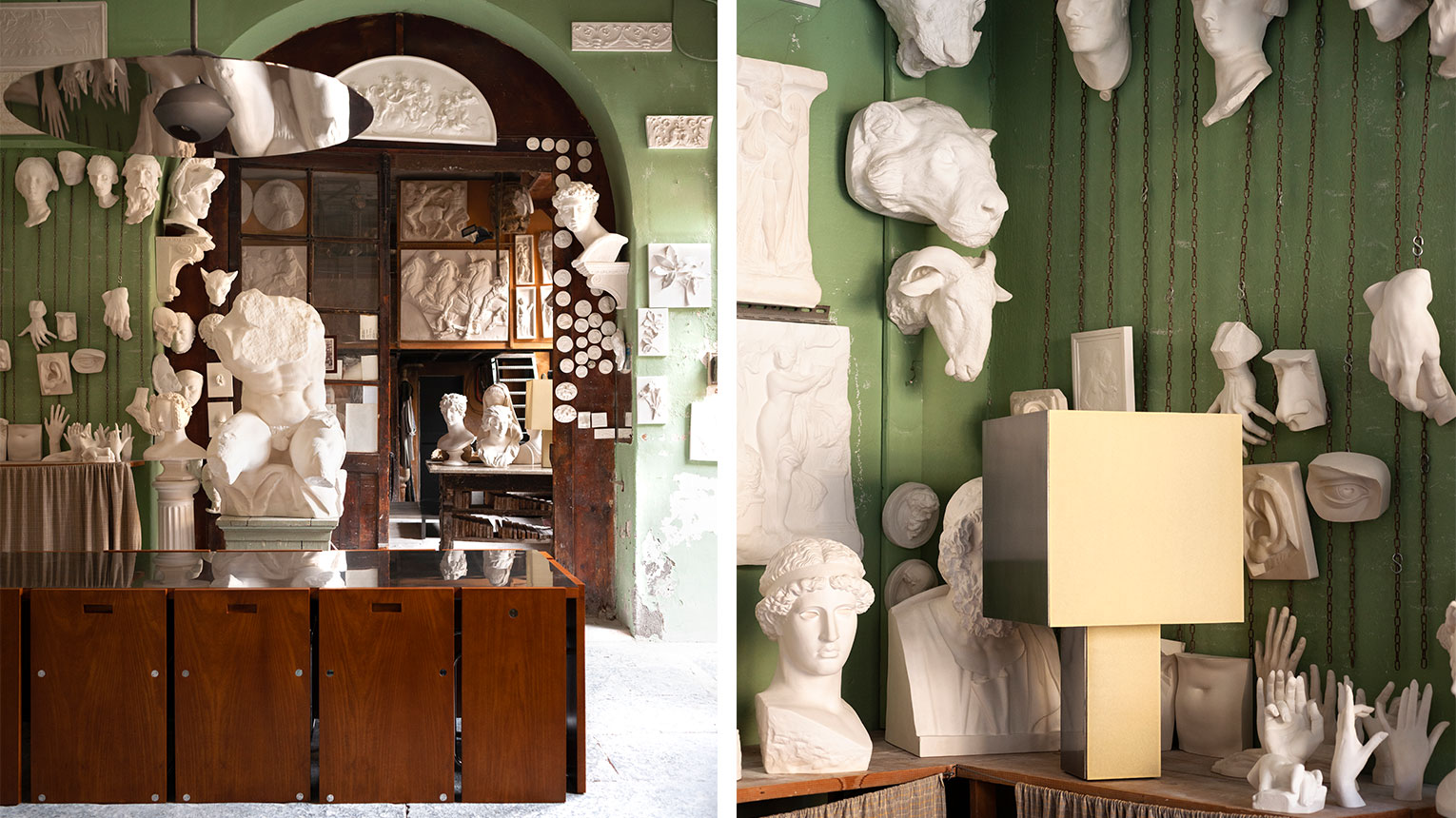
Interni Venosta made a quiet debut during Milan Design Week 2024, with an immersive presentation staged within Gipsoteca Fumagalli e Dossi, a compact plaster workshop tucked within a courtyard on the northern edge of Brera.
It is a new venture by Emiliano Salci and Britt Moran, better known as the founders of Dimorestudio and whose creative talent extends to objects, furniture and curated interiors that merge design rigour and nostalgia.
Inside Interni Venosta's launch
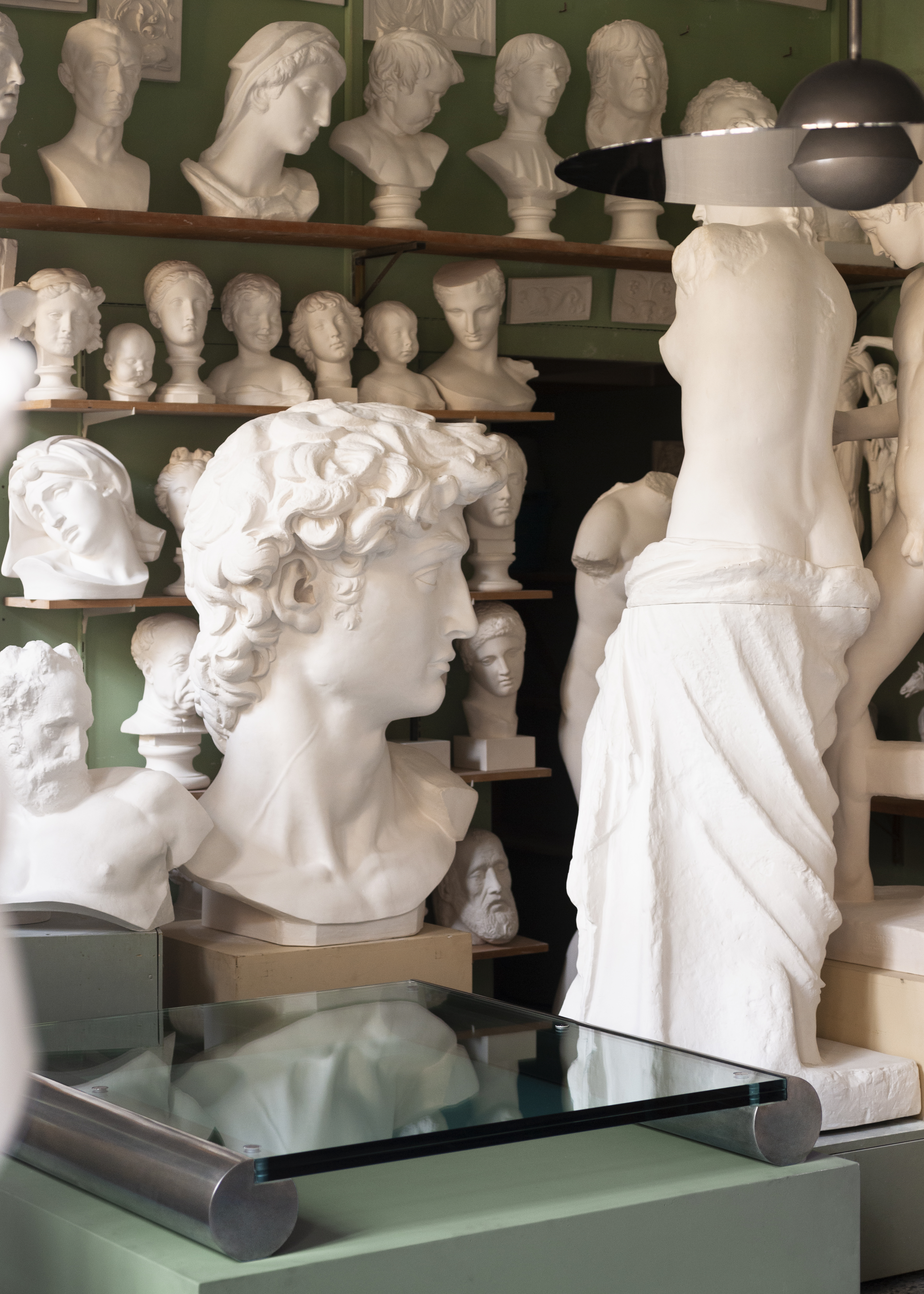
To launch Interni Venosta, Moran and Salci partnered with Tuscan furniture manufacturer Fabbri Services, who helped the pair bring their vision to life and will ensure a brief lead time for the brand's made to order objects.
The brand's offering pays homage to 1970s Italian design: its name suggests a reference to Carla Venosta, a designer whose contemporary interpretation of domestic objects left a mark on the Italian panorama. '[Interni Venosta] does not intend to indicate a reinterpretation of her work, but rather to be a citation of the culture and visionary style of her era which refers to the Milanese and Italian elegance of the past, where culture and sobriety reflected social background, and where the modern and the avant-garde merged with the classic,' say the duo.
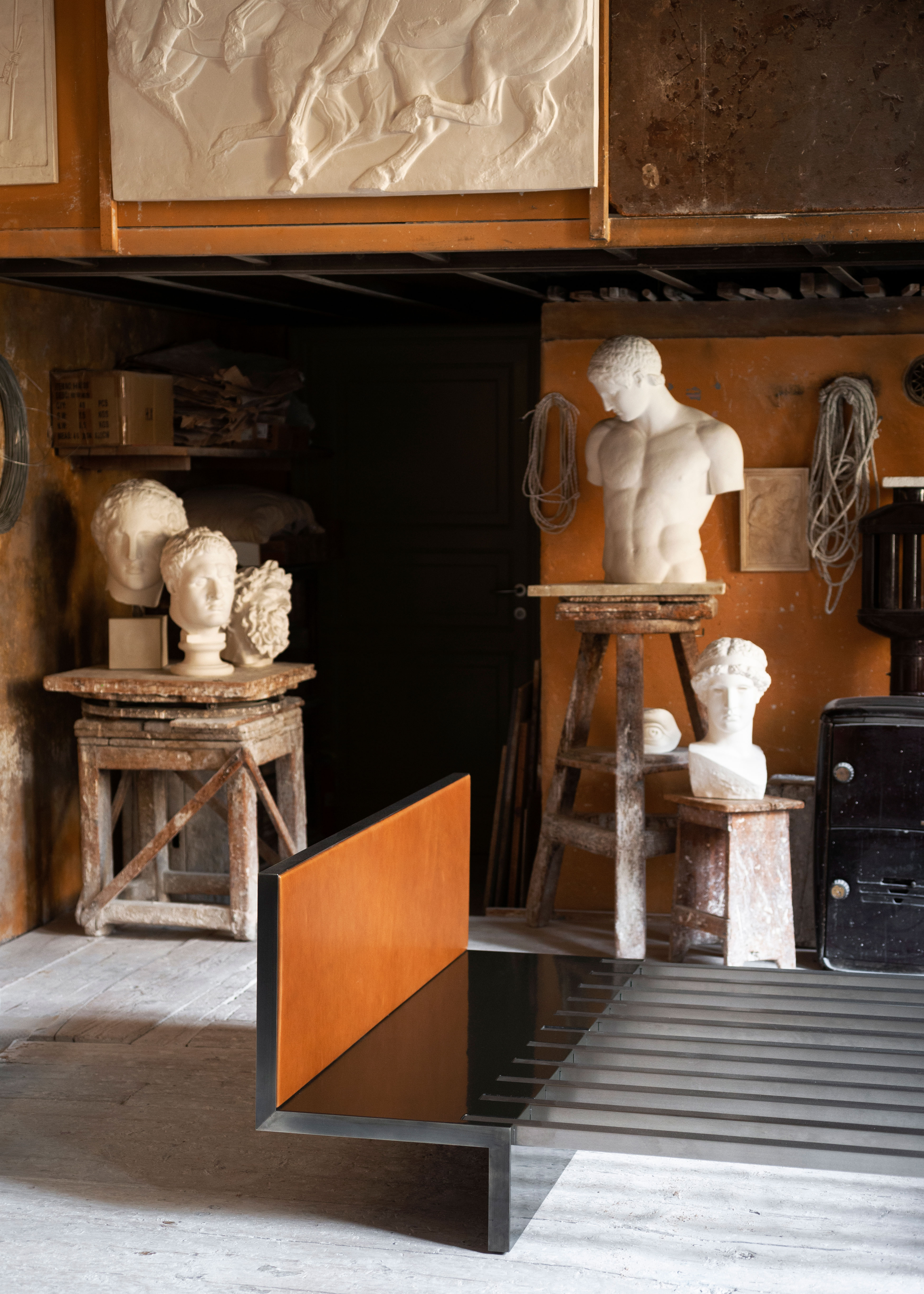
The inaugural collection features objects inspired by Milanese interiors with a contemporary flair, and nods to Contemporary American Art and the Bauhaus, with inspirations including Donald Judd, Carle Andre and Walter de Maria, Marcel Breuer and Gerrit Rietveld.
It includes a table and chairs with wicker seat, a table lamp in brushed steel and paper, a class coffee table standing on a tubular frame, a space-age ceiling lamp, a modular divider and a bed. The compact material palette includes steel (both brushed and black lacquered, with a discreet, non-gloss effect), walnut and glass, and every object has a kind of patina that suggests a well-lived interior.
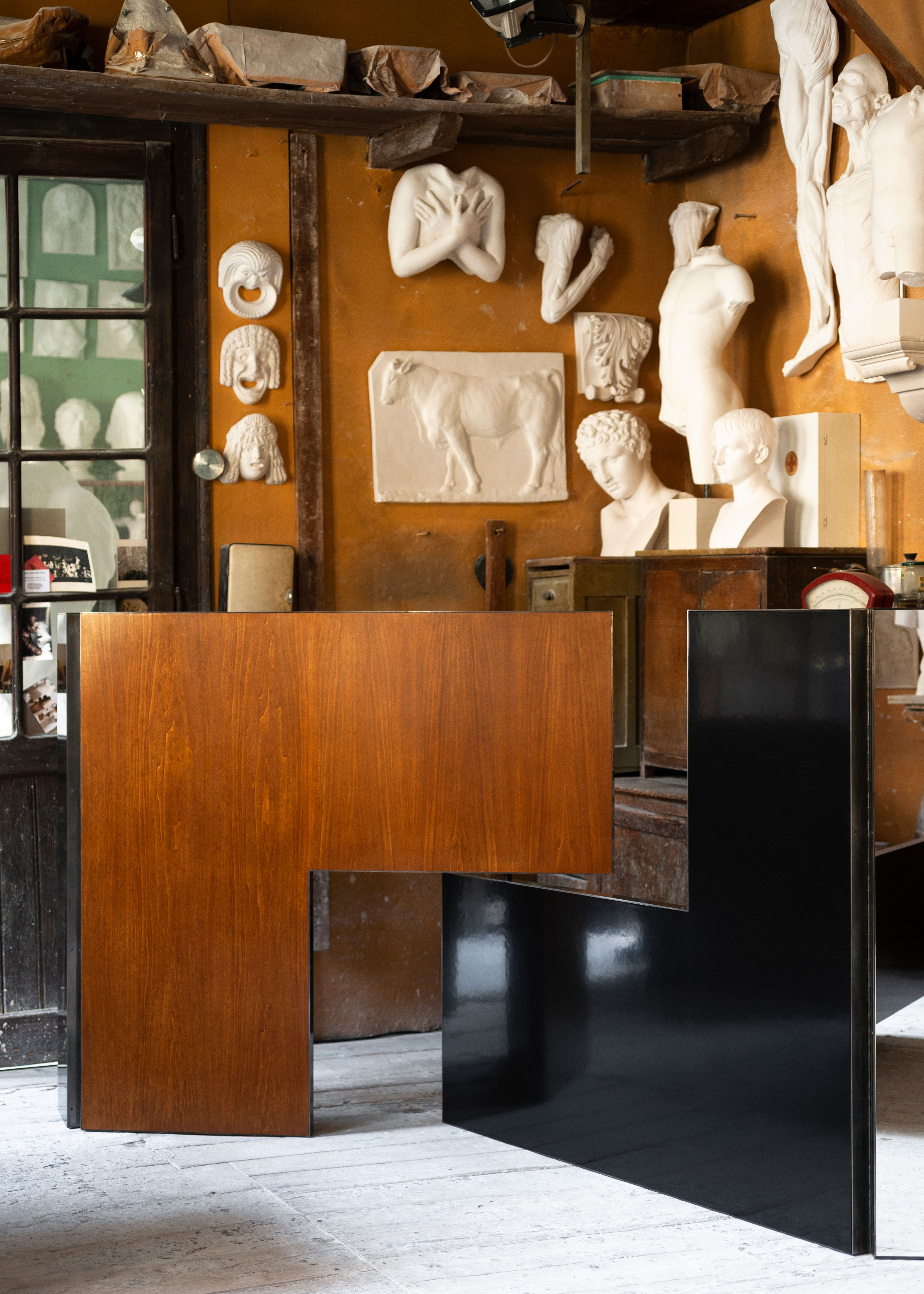
Moran and Salci describe the pieces as 'Simple, honest, concise.' They continue: 'The desire to create a collection in a world characterized by increasingly frequent changes gave rise to the stimulus to design pieces that appear contrasting, but which at the same time coexist alongside those already present, creating an innovative and sophisticated home, as in past times, and where it predominates the desire to surround yourself with timeless objects.'
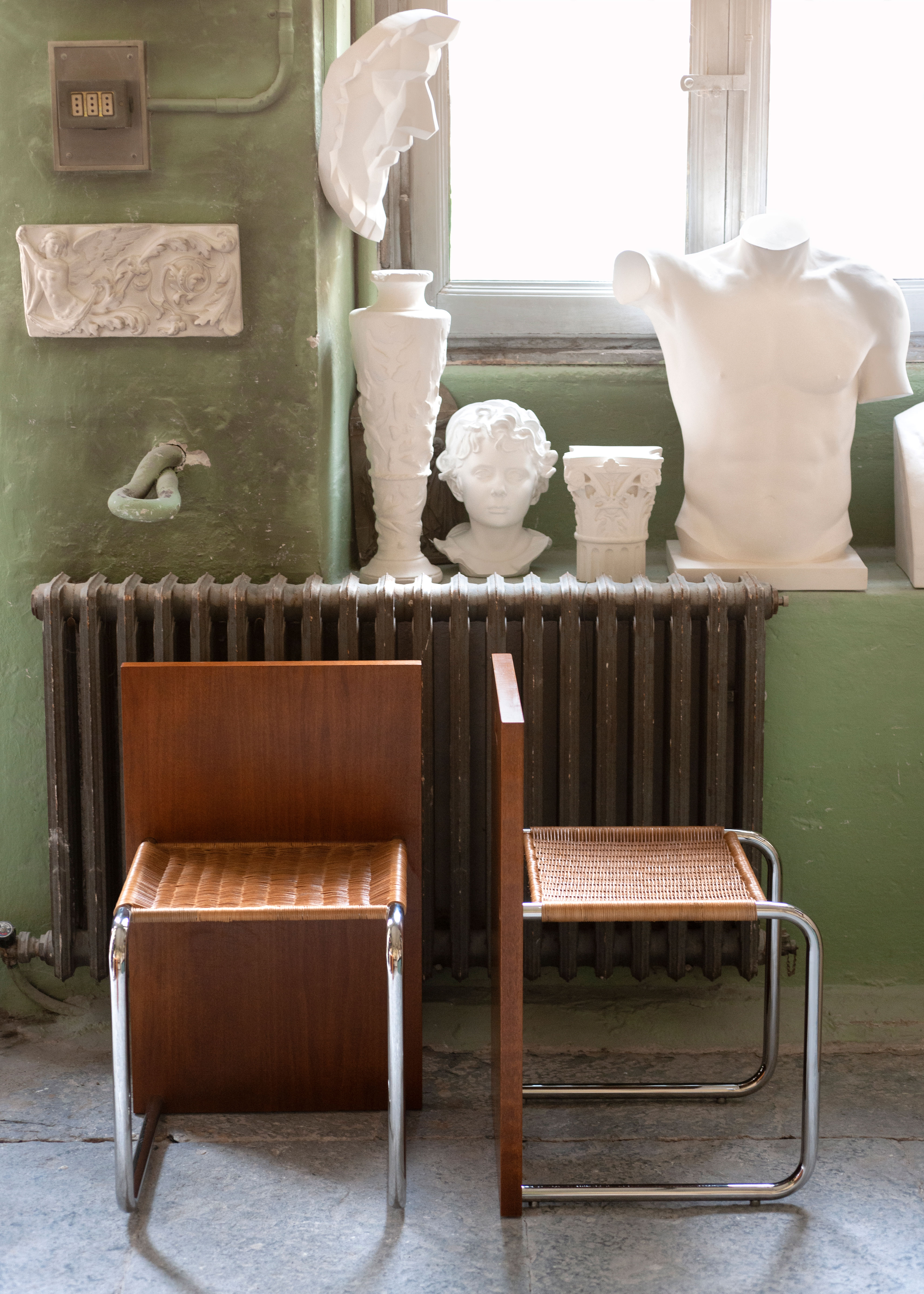
In the future, we can expect this initial capsule to expand to offer their vision to the entire home, with furnishings that 'communicate with each other and coexist in our homes, blending perfectly with what we already own, as if they had always been with us.'
